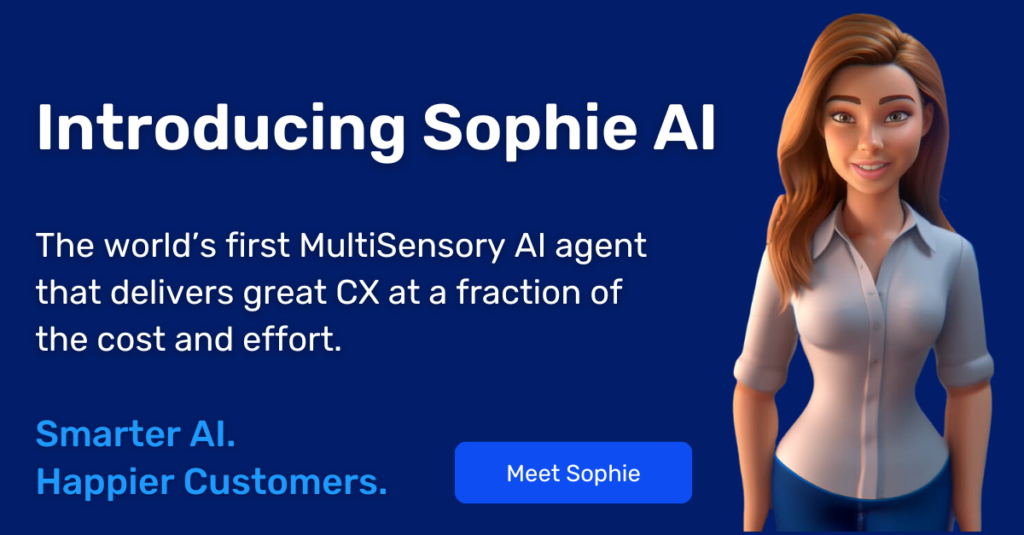Contents
- What is Customer Churn?
- Customer Churn Rate Per Industry (in USA) in 2022
- Why is Understanding Customer Churn Important?
- Customer Churn Rate vs. Customer Attrition Rate
- Creating a Customer Churn Model
- What Causes Customer Churn?
- Which of Your Customers Are Most Susceptible to Leaving?
- Strategies to Manage and Reduce Customer Churn
- What Can We Learn From Churn?
- How to Leverage Your Customer Churn Model
- The Urgency of Reducing Customer Churn
Customer churn in the age of information is a fact of life for every business in every industry. Customers have unprecedented access to data, enabling easy comparisons of alternatives and hassle-free provider changes with a simple click of a button. With blind consumer loyalty a thing of the past, companies must work harder than ever to understand the factors behind their customer churn to best strategize on how to minimize it going forward.
What is Customer Churn?
Customer churn is a key metric in customer service which refers to the percentage of customer attrition over a specific period of time. High churn means that a more significant number of customers no longer want to purchase goods and services from the business. While some customers are lost due to involuntary churn – billing issues or death, for example – it is the ones lost due to voluntary churn that companies are most concerned with. In addition, partial churn refers to a customer’s decision to downgrade their level of service or purchase a decreased number of products or otherwise become less profitable to the company.
Download this Survey Report on the State Customer Loyalty and Churn 2022
Customer Churn Rate Per Industry (in USA) in 2022
According to a report by Statista.com, customer are most likely to leave their current provider in the Cable and Financial/Credit industries.
| Industry | % Churn in 2022 |
|---|---|
| Cable | 25% |
| General Retail | 24% |
| Financial/Credit | 25% |
| Online Retail | 22% |
| Telecom/Wireless | 21% |
| Travel | 18% |
| Big Box Electronics | 11% |
Regardless of the difference in customer churn across the various industries covered in the above-mentioned report, these statistics underscore the fact that churn plagues all verticals, and reducing customer churn is critical to almost every industry.
Why is Understanding Customer Churn Important?
While some churn must be expected, a high churn rate can cripple the growth of an organization. It is significantly less expensive to retain a current customer than to acquire a new customer. Finding ways to retain customers by reducing churn is essential, with even slight fluctuations impacting profit margins significantly. And in order to reduce customer churn, it’s imperative to know what your churn rate is and at what point in their journey customers are jumping ship.
Customer Churn Rate vs. Customer Attrition Rate
Customer churn rate is calculated by dividing the number of customers lost in a given period by the total number of customers at the beginning of that period. For example, if a company began 2020 with 50,000 customers, lost 3,700 but also acquired 1,600 over that same year, the churn rate would be 7.1%.
This differs from the customer attrition rate. The customer attrition rate is measured by dividing the number of customers lost in a given period by the number of customers at the beginning of that same period. Using the same example, if a company started 2020 with 50,000 customers and lost 2,500 customers during that year, then the attrition rate is 5.0%.
Creating a Customer Churn Model
A churn model is a mathematical representation of how customer churn impacts your business. A predictive churn model uses existing data to estimate future potential churn rates. Several steps are needed to build a useful churn model:
Build Customer Profiles
Basic details about the customer should be included, but the more data you have about a customer, the stronger your prediction model will be, as it will be easier to identify patterns in churned customers based on their demographics.
Analyze Purchase Data
Expand your customer profiles by including information about their past purchases and billing history. You should include the length of time from signup to cancellation, overall lifetime value, and payment history.
Follow Customer Experience
Track all customer interactions with your brand, product, or service. Enhancing customer profiles with this data can shed light on hiccups in the customer journey that are impacting churn rates.
Armed with this data, companies can build customer churn models to understand their churn patterns better and strategize how to create effective retention policies that will help minimize churn.
What Causes Customer Churn?
Understanding the drivers of customer churn will go a long way toward informing your strategy. Insights from our customer churn survey report bring to light the key reasons why customers are leaving:
- Broken Omnichannel Flows: Customers report expending effort on repeating steps and information, in addition to having to move between service channels.
- Poor Agent Service: Customers report service reps were unable to resolve their issue, weren’t knowledgeable enough or were rude or had an inappropriate approach.
- Wait Time: Our report indicates that 1 in 3 customers churn if their issue isn’t resolved fast enough.
- Ineffective Self-Service: Demand for self service shows to have increased by 15% post-pandemic.
This data reinforces the need for companies to meet customer demand for convenient and effortless customer service transactions. When these expectations are not met, customers will simply take their business elsewhere.
Which of Your Customers Are Most Susceptible to Leaving?
Aside from understanding the reasons for customer churn, it is essential to identify your at-risk customers. The three most likely groups of customers to churn can be defined as dissatisfied, vulnerable, and disengaged.
Dissatisfied
Dissatisfied customers are those who feel a business did not provide a product or service as expected. Beyond the loss of their business, these customers present a threat as they could negatively influence others, especially in the era of social media.
Vulnerable
Vulnerable customers are those who would not hesitate to move to a competitor if offered a better deal. This high-risk group is relevant across multiple industries as one third of all customers have zero brand preference. This means they can be easily seduced by a superior offering. If a company originally lured a customer away from a rival with an effective promotion, that customer can be considered vulnerable as they have already demonstrated their disloyalty.
Disengaged
Disengaged customers are those who do not regularly utilize a company’s products or services, or no longer find the organization relevant to their lives. They are usually difficult to detect because they often have not had a negative experience; they have just become inactive and have fallen off the radar.
Strategies to Manage and Reduce Customer Churn
| Type of Customer | Strategies |
|---|---|
| Dissatisfied | • Address the negative issue directly, either privately or publicly • Empower employees to react appropriately to a dissatisfied customer to avoid escalation • Collect honest customer feedback and carry out subsequent data analysis to help determine whether the issue is a recurring one, and if so, look for the root cause and fix it |
| Vulnerable | • Identify key points in the customer journey when this group is most likely to churn • Increase personalization efforts • Find ways to emotionally connect with customers |
| Disengaged | • Send retention-focused emails to encourage better engagement by highlighting benefits or explaining underused features • Check that the customer has achieved their goal when engaging with the company’s product or service |
Tailoring retention strategies to the unique needs and considerations of the three key groups of customers most likely to churn helps deepen relationships and reduces the likelihood of customers jumping ship.
RELATED ARTICLES:
4 Technologies Which Support Customer Retention Strategies
Customer Retention Strategies in the Telecom Industry
What Can We Learn From Churn?
It is unrealistic to think that your best efforts will reduce your churn rate to zero. Customers will always churn. But we can take those – hopefully minimal – opportunities to learn from our churning customers. Companies can gain honest feedback about why customers leave through exit surveys or more in-depth exit interviews. Companies can ask open-ended questions like:
- What do you dislike about our service?
- What could we have done better?
Or, companies can give churners a multiple-choice option for why they are leaving:
- I don’t know how to use your service
- I found something better
- I need a feature you don’t offer
- It’s too expensive
- Someone else is making the decision
Analyzing this information by plugging it into your customer churn model can yield eye-opening results.
How to Leverage Your Customer Churn Model
It’s not enough to understand where, when, and why your customers are churning. Companies looking to improve their customer retention rates must use the data from their churn models to make changes within the organization. Some tried-and-true strategies:
Ensure an Effortless Customer Experience
It’s one of the best investments you can make, and you will feel its impact across all your KPIs. Scrutinize current customer-facing processes and determine what steps can be taken in the immediate, short and longer terms to boost customer service to a point where a frictionless experience is being provided and long-term customer loyalty is being built.
Focus on Customer Success
Ensure customers achieve the goals they were aspiring for when engaging with your product or service. Listen to the customer and analyze their needs to provide spot-on solutions that will ensure success. Solutions include voice of the customer (VoC) closed-loop surveys that enable companies to take quick action based on customer feedback and best practices for renewal management.
Support Your Customer
Help customers get the most out of your products and services and ensure any issues are handled efficiently. Offer how-to guides or explainer videos, implement chatbots and live agent assistance, and meet the customers where they are on social media. Visual assistance allows agents to see the customers’ physical environment via their smart devices in real-time and visually guide them using Augmented Reality. This enables fast, effective problem diagnosis and resolution between tech support agents and customers – resulting in significantly higher levels of customer satisfaction.
Reward Customer Loyalty
Give customers incentives to come back repeatedly with loyalty programs or other award discounts. Recognize your most valuable customers and make sure they feel appreciated.
The Urgency of Reducing Customer Churn
High customer churn is a current epidemic across many industries, and managing churn has become critically important for the profitability of companies. With the global average value of a lost customer estimated to be $243, focusing efforts on improving customer retention and understanding the top reasons for customer churn is critical to help companies control attrition – estimated to cause total losses of $1.6 trillion per year. Take the time to analyze your business’ churn data, engage your customers, solicit feedback, and take action to improve.







